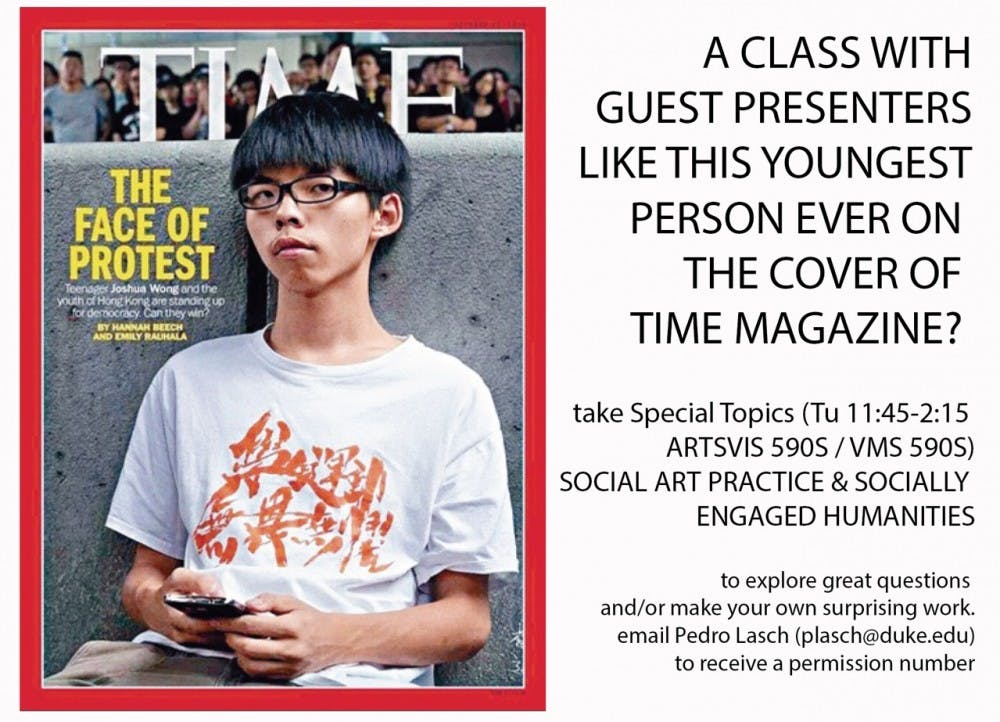When most people think about classic examples of art, Leonardo Da Vinci’s "Mona Lisa" poised on a wall in the Louvre or Michelangelo’s "David" standing proudly in Florence probably come to mind. What most people might not consider is the artistic merit and beauty that can be expressed through some of the daily activities and cultural and social movements in our everyday lives.
This semester, Pedro Lasch, associate research professor of art, art history and visual studies, offers a class entitled “Social Art Practice and Socially Engaged Humanities,” which he hopes will encourage students to use art to actively interact with our society's cultural and political practices.
Lasch has developed a passion for creating contemporary and interdisciplinary art with a social message. This latest course combines aspects from the more traditional art classes he has taught, like drawing and painting, with his advanced art seminars. He wants students to realize that art does not necessarily need to take the form of an object like a painting or a drawing to comment on the world.
“In this class, we want to ask ourselves… why can’t art be something that people engage with or perceive?” Lasch said. “If an artist does something that changes the way in which people relate to each other, you may still use an object to help produce that, but why can't we call that shift and new form of perception or social relations the artwork in itself?”
The structure of the course poses these questions through a fusion of flipped instruction and in-class activities. The course lectures and readings will be primarily online using course materials from a Massive Open Online Course (MOOC) that Lasch created in collaboration with the art institution Creative Time.
The MOOC includes video lectures conducted by Lasch and 29 guest lecturers that will complement the in-class discussions and student projects. Lasch has planned activities that allow students to use the theories the will learn through the lecture and apply it to art created during class time.
“Students will be actively engaging with the social message by doing them, not just by reading about them," Lasch said.
Attracting a wide range of students from various disciplines in the arts, humanities and academic research will allow the course to be a hub for artistic collaboration, Lasch hopes. He said he finds that creative and collaborative spaces are crucial for fostering a community that exchanges ideas from different perspectives and creates art reflecting relevant cultural and political sentiments.
“Say you're a political science student who cares about border culture…and you have this idea late at night to have some guy fly over the border as a political act," Lasch said. "But if you don't know that somebody already did this actually fifteen years ago you may just think, well that's just a crazy idea.”
At times, the obscure nature of some social art has the potential to be inscrutable—art is not always made to be understood or explicitly stated.
“Other works can be about being felt, or questioning something, or simply interesting,” Lasch said. “There are other areas of art that try to reach for other areas of human experience--not just rationality."
Get The Chronicle straight to your inbox
Sign up for our weekly newsletter. Cancel at any time.

